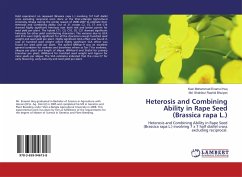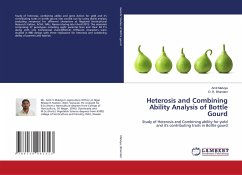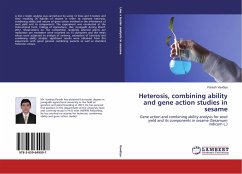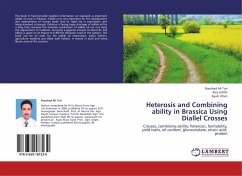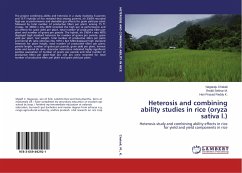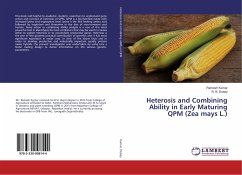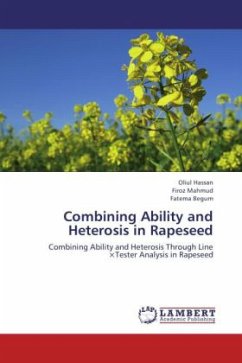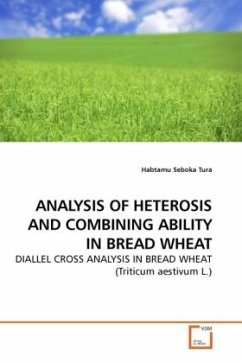
Heterosis and combining ability analysis in sesamum
To study heterosis, combining ability and gene action for seed yield and its yield components.
Versandkostenfrei!
Versandfertig in 6-10 Tagen
40,99 €
inkl. MwSt.

PAYBACK Punkte
20 °P sammeln!
The Analysis of Variance revealed that significant differences among treatments, parents, hybrids and parents presence v/s hybrids for all the characters except days to maturity. This validated that, presence of considerable amount of variability among experimental material. Five crosses viz., TBS-10 x TBS-05, R-20 x TBS-05, TBS-07 x TBS-05, TBS-05 x R-09 and TBS-10 x V-13 manifested significant and positive heterosis over better parent and both standard checks AKT-101 and JLT- 408 respectively, for seed yield per plant. The above mentioned highly heterotic crosses also occupied top ranks in p...
The Analysis of Variance revealed that significant differences among treatments, parents, hybrids and parents presence v/s hybrids for all the characters except days to maturity. This validated that, presence of considerable amount of variability among experimental material. Five crosses viz., TBS-10 x TBS-05, R-20 x TBS-05, TBS-07 x TBS-05, TBS-05 x R-09 and TBS-10 x V-13 manifested significant and positive heterosis over better parent and both standard checks AKT-101 and JLT- 408 respectively, for seed yield per plant. The above mentioned highly heterotic crosses also occupied top ranks in per se performance for seed yield per plant. Hence, these crosses would be exploited for isolating transgressive segregants for seed yield and its component traits for genetic improvement in sesame. Among parents, TBS-05 and TBS-10 was found to good general combiner for seed yield per plant. Considering both per se and GCA effect the parents TBS-05 and TBS-10 were found to be best. Better segregants can be obtained from hybrid combination for seed yield and yield contributing characters.



